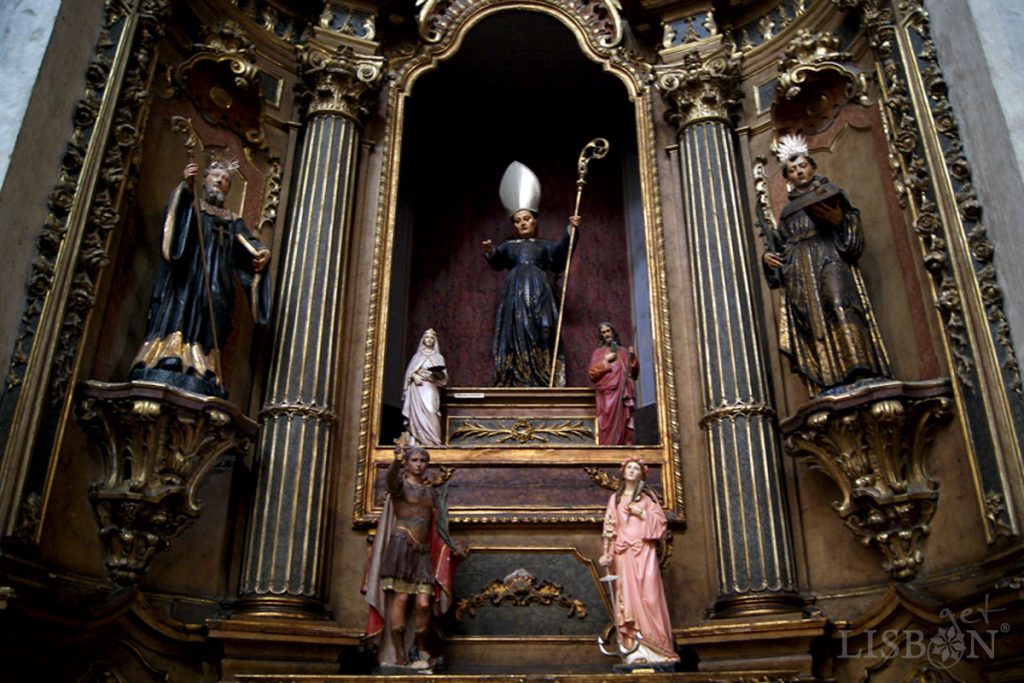Original article published on 19 September 2018
The extinction of the Religious Orders in 1834 was one of the significant episodes in the History of Portugal and consequently in the History of Lisbon. A determining factor in the destiny of the cultural and patrimonial panorama, over the 19th and 20th century. Many of our articles mention this event and this article in particular helps the reader to have a better understanding of its impact.
The beginning of the 19th century was marked by a long and bloody civil war (1828-1834) that, with the victory of the liberal faction, was followed by a period of profound restructure in the social political organisation of the State.
In this context, the assets of the Church, the Royal Family and the Crown were incorporated into the Public Treasury. It was intended to extinguish interests and powers installed, expropriating and redistributing through the sale, these movable and immovable property.
These practices also took place in France and Spain, from where enlightenment and liberal currents emerged, ultimately bringing an end to the old structure of the Ancien Régime.
In Portugal, Marquês de Pombal had already struck a severe blow in the Church with the expulsion of the Jesuits in 1759 and begun a revolutionary process of development and reorganisation of the State, based on the Enlightenment, but that with his disengagement in 1777, was slowed down.
After the institution of the liberal regime, profound changes took place in the conceptions of power and property, with repercussions in the social structure. There were also changes in the agricultural and industrial production that impacted the organisation of the territory that would mark the growth of the cities and the resulting urbanism.
If we stop to think that for centuries, art counted on the Clergy and Nobility, as its main patrons, we are able to perceive the impact that these measures had at the level of the arts, as well as on the destiny of the then existing movable and immovable artistic and cultural patrimony.
This is the impact in particular that we want to address.
Immovable Assets: The Buildings – Conservation or Ruin

The handing over of the immovable property of the religious institutions to the State resulted, as a first step, in its sale and later, in the utilisation of the property that remained, by public administration or health services, schools or institutions associated with Defence, such as military bases.
The occupation of the buildings for different purposes forced the transformation and adaptation of these spaces, many times with radical and irreversible interventions. Other buildings, due to being away from the urban centres, were simply abandoned, subject to the progressive ruin and looting.
The extinction of the Religious Orders didn’t have the same impact in every institution. The fact that the female orders were more protected, being only extinct after the death of the last nun, allowed some convents to be spared. This was the case of the Cardaes Convent still today taken over by Dominican nuns of the Associação Nossa Senhora Consoladora dos Aflitos known for its community service of great significance. This convent holds a movable and immovable patrimonial inheritance, worth a mention and an indispensable visit for lovers of the 17th and 18th century’s art in general and of the Portuguese Baroque in particular.
Other less fortunate buildings are, despite everything, being recovered with the growing awareness of heritage and cultural importance. This is the case of Convent of Graça, which has long been occupied by soldiers of the Republican National Guard but that has recently been restored and open to the public. Here we can appreciate its front door, with its surprising inlaid marbles, the old room of the refectory with its walls half covered in panels of tiles and a cloister.
Despite not having its movable assets, the buildings now recovered are prime locations for exhibitions and other events or simply to be admired.


Movable Assets: Lost or Decontextualised Items

The extinction of the Religious Orders also had a big impact when it comes to movable assets. Some were moved to other buildings, ecclesiastical or not, in order to be safeguarded. We’re talking about painting, sculpture, furniture and other decorative art pieces that filled the convents and monasteries.
These changes of place were not documented in most cases, consisting of a memory that was passed on, but of which details are unknown, converting, therefore, into myths. In this context, some parochial churches received items that belonged to monasteries or convents that are now extinct and that used to be located nearby.
That explains, for instance, the amount of images of saints that we can observe in each altar in the Church of Graça today. Items of different dimensions and styles that once had another home.
However, most of the movable assets were dispersed in more damaging ways, stolen, traded, many times abroad, or even destroyed owing to negligence or unawareness of its value.
These practices originated the development of the market of antiques, furniture, sacred art, painting, sculpture, as well as truncated exemplars of decorative arts, such as carving or tiles.
This way, private collections have been constituted and over time were/are donated or acquired by Museums. These, except for their meritorious and fundamental role as conservation, investigation and divulgation agents, are, as a last resort, depositaries for decontextualised items.
The fact that its provenance is unknown is a gap in its history, information that would be important as these objects are the response of an artist to a private or institutional buyer. It is up to the historian and other multidisciplinary technicians to study these pieces according to stylistic and laboratory analyses. However, not having documentation will always constitute an incomplete knowledge.
| Never miss another article | Subscribe here |
Revelation of the Secret Culinary Recipes

We cannot fail to mention another consequence of the extinction of the Religious Orders, being this one frankly more positive. The Convents and Monasteries held secrets of culinary and confectionary recipes that were forced to be divulged.
With more or less secrecy, delicacies that were hitherto exclusive to only a few, were given to taste to a wider audience. Some of them became emblematic and constitute successful businesses, such as the pastéis de Belém (egg custard tarts).
Learn how to make the famous egg tart in a cooking class with professional and friendly chefs. 🙂 Book now!
Sweet-eggs, other types of cakes and pastries, without forgetting the famous white marmalade of the nuns of the Monastery of Odivelas, whose recipe was only made public after the death of the last nun.
Today, almost 200 years after the implementation of this law, let’s visit the museums, the conserved or rehabilitated buildings and the traditional patisseries and enjoy as well as be delighted with the legacy of this revolution.
Get to know Lisbon’s historic neighbourhoods in a guided tour and discover unmissable places of this magnificent city.
The project getLISBON has been very rewarding and we want to continue revealing the singularities of fascinating Lisbon.
Help us keep this project alive!
By using these links to make your reservations you’ll be supporting us. With no extra costs!
• Looking for a different experience? We can create a customised itinerary based on your interests. Contact us!
• Or if you prefer tours and other activities in various destinations, take a look at GetYourGuide.
• Save time and money with a flexible Lisbon Card!




